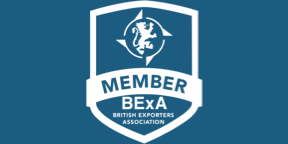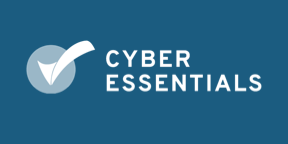
NCTS Phase 4 is about to progress to NCTS Phase 5 as part of a program of planned changes agreed under the Common Transit Convention to how Transit operates and aligns with other contracting nations. This alignment needs to be completed by December 2nd, 2024.
Regulatory note:
NCTS5 went live in the UK under the Transitional Rules on 1st July 2024 and will fall under the Final State Rules on 22nd January 2025. This means that two different IT releases with differing functions will be implemented on these two dates.
It has been demanding and sometimes frustrating for traders, agents, and hauliers using Transit, to keep up with changes to the border requirements, updates to the NCTS (which supports the Transit procedures), and compliance, with an ever-changing landscape that supports the physical movement of goods over borders under Transit.
If the right processes have not been completed in the right order, the driver will be stuck at one end of the phone waiting for clearance advice while another party in control of the movement attempts to determine what has gone wrong, where, and why.
Transit is intended to support a seamless movement from A to B. As the NCTS system has progressed in its development, it has sometimes been challenging for users to adapt to system updates and alterations to methods.
All IT systems will need updating from time to time. For users, the updates need to be released in a measured way, and the requirements must be well communicated and supported in working practice.
Regulatory background and where we are now
Transit measures stem from the Common Transit Convention, which is an international agreement made by all contracting nations which allows traders to:
- Move goods more quickly
- Benefit from duty suspension
- Complete some Customs procedures away from the border.
The NCTS: New Computerised Transit System: What it is and what it does.
A business submitting a transit declaration into their national NCTS initiates the Common Transit process. All contracting nations use it for the following purposes:
- The tracking goods movements
- To suspend duties, VAT and other charges until the goods are released at the designated destination point and placed under another procedure
Who uses the NCTS?
- Traders who move goods across borders
- Agents and intermediaries, including logistics providers and operators
- Third-party software developers who support using NCTS in user working practice systems.
How to access NCTS5
NCTS5 can be accessed by:
- the free-to-use Web Portal in Gov.UK, Submit union transit declarations through NCTS - GOV.UK (www.gov.uk) or
- by commercial/specialist third party software
Changes to the NCTS will require changes to IT systems supporting its use in internal business processes. Any change to the NCTS will need to be approved and initiated, as well as changes in the software packages employed in business working methods.
These incremental changes can be difficult for both the software provider adapting the software and the business using that software. It can be challenging to identify an error, where it occurs, and where the error sits - either with the user, the software, or elsewhere, in a complex process.
Technical Considerations
Movement Reference Number: A change to the regulation requires that the ‘MRN’ be presented electronically and that the MRN must always be accessible by the driver or the person in charge of the goods.
Inbound movements at GVMS border locations where the Transit MRN is included in the MRN:
Inbound movements at Goods Vehicle Movement Service (GVMS) border locations in the UK, where the Transit MRN is included within the Goods Movement Reference (GMR), the Office of Transit functions will be completed electronically, and any examination requirements communicated via GVMS.
Note: This is still a work in progress. HMRC is currently working with Border Force to determine how electronic presentations will work at the Office of Destination. Further information will follow in due course.
Non - GVMS border locations:
Inbound movements at non-GVMS border locations will need MRN presented as a linear barcode to enable the Border Force to complete Office of Transit and Destination formalities.
It is recommended that drivers continue carrying the paper Transit Accompanying Document (TAD) through non-GVMS locations to ensure that movements are handled as efficiently as possible.
Outbound movements at the Office of Departure
For outbound movements at the Office of Departure, the Border Force in the UK will continue to print the TAD for drivers, if needed, whilst the National Administrations transition to the digital format.
During the transitional phase, National Administrations will be at varying levels of readiness for the digital implementation of the Final State Rules on 22nd January 2025. Awareness of the requirements expected on goods’ arrival at the destination should be kept in mind, as procedures could vary considerably until the new digital systems are in place, tested, and working to standard.
Introduction of the Office of Incident: Managing an unexpected event that impacts Transit procedures.
Should an unexpected transport event (such as a vehicle breakdown) impact or cause a disjoint in the technical presentation of goods, contact should be made with the local Office of Incident (located within local Customs offices).
The movement can then be reset, and appropriate arrangements can be made to continue the movement. Contacting the Office of Incident should reduce delays at the Office of Destination.
Customs Offices can be determined through the link below.
Customs Office List - Data Europa EU
Top Snippets
Once NCTS5 has been implemented, it will become possible to amend a pre-lodged declaration before the declaration is fully submitted. This will be a welcome improvement to NCTS4.
NCTS5 must be in use by all National Administrations by 2nd December 2024. However, the implementation dates of NCTS5 will differ between the national administrations, which could cause disjoint to the transit administration requirements at the destination.
The Web Portal should smoothly transition to NCTS5. This process will be automatic, and users should not notice the change.
Responsibilities
Authorised Consignors:
Authorised Consignors will be responsible for providing their drivers with the linear barcode and MRN in a data format used by the importing authorities. The method of data presentation given to the driver must be fit for purpose and compliant with the local procedures of the Importing National Administration.
Authorised Consignees:
Where a transit movement completes at the premises of an authorised consignee, it is the responsibility of that authorised consignee to ensure that the delivering driver is able to present the MRN and linear barcode in an acceptable format, such as email, SMS exchange, or an app. Much will depend on a driver's electronic device, which will dovetail with the destination requirement.
Paper TADs will always be the backstop should electronic provision not be available.
Recommendations
- TAD: Print a copy of the TAD for the driver and make sure he carries it and keeps it safe. A paper TAD will always be accepted and necessary when electronic measures are either unsupported or unready. Preparing a paper TAD does not prevent the border movement from being processed electronically.
- Keep the driver informed and provide the driver with applicable paperwork and references.
- Each national administration could have variances in its local procedures. Be aware and prepare for those local procedural requirements.
- Be prepared for the different national administrations at various stages in the digital transition process during the transitional phase.
- Check out Frequently Asked Questions. A link to the S&H website is below
Link to Frequently Asked Questions:
HMRC Transit newsletters can be accessed from the link below
Transit newsletters — HMRC updates - GOV.UK (www.gov.uk)
STOP PRESS: 3rd June 2024: HMRC releases further details on declaring multiple consignees and consignors during the transition period and further information on declaring ‘Multiple House Consignments’ on NCTS5 in Final State Rules. Read the S&H article using the link below:
If you are interested in exploring this topic further, you might find it worthwhile to consider the training courses and live clinics offered by Strong & Herd LLP:

Focus On: NCTS What you need to know
Since the UK left the customs union of the EU, there has been an increased need for companies to use transit to move goods into or through the EU Member States. This workshop takes you from a basic review of what transit / NCTS are to the application process to become an authorised consignee/ consignor. It also illustrates how to apply for and use a transit guarantee. With tips on making transit declarations, the role of the Transit Accompanying Document (TAD) and discharging a transit movement.
OneCall™ Email assistance as and when required; A one-call solution for all your import, export and customs enquiries. Export help. Import help. Customs help.
Stay informed about customs and international trade matters by subscribing to our OneCall™ service. This comprehensive offering includes a dedicated email helpline for support, timely practical updates direct to your inbox (Did You Know?), monthly UK Customs & Trade Briefings and access to an interactive members' area with an exclusive community for our subscribers.
International Trade Updates & Spotlight Newsletter
Subscribe to our free information emails covering international trade topics...
MORE INDUSTRY INSIGHTS...

Strong & Herd LLP








